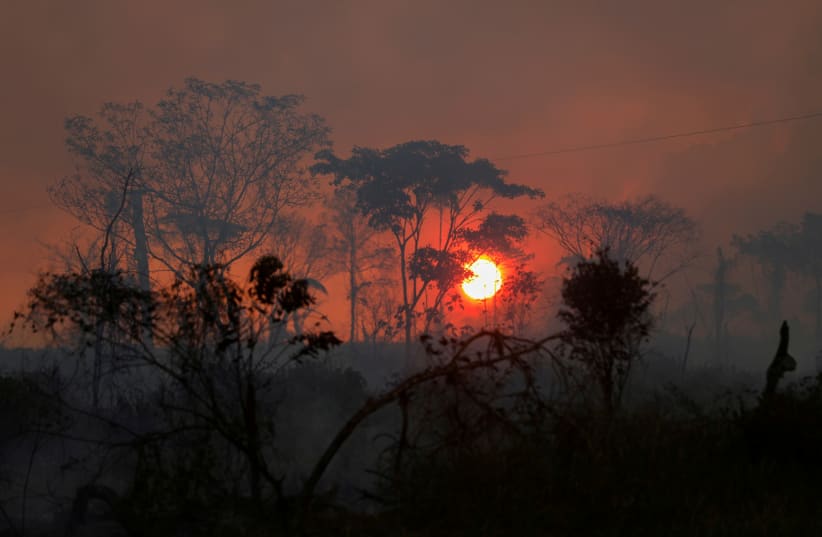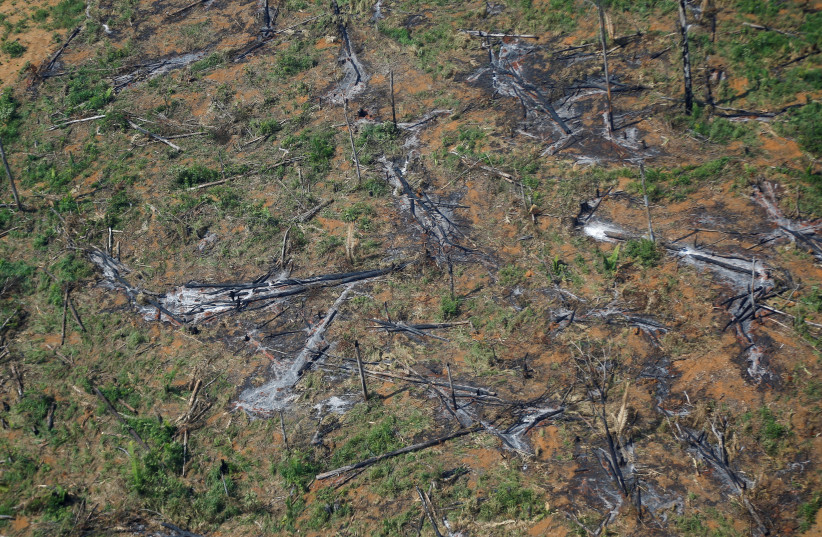Rainforests are currently being decimated by human activity, but they have the ability to regrow on barren land.
A team found that natural forest regeneration is a sustainable, inexpensive method of mitigating the harmful effects of climate change, conserving biodiversity and restoring ecosystems, publishing their study in the peer-reviewed journal Science Advances on Thursday.
After gathering data from 77 secondary forest sites in the Americas and West Africa, the team of tropical ecologists found that regrown tropical forests can have, on average, almost 80% of the soil fertility, tree diversity, structure and soil carbon storage of old-growth forests.
The study's lead author, Prof. Lourens Poorter of the Forest Ecology and Forest Management Group at Wageningen University in the Netherlands, emphasized tha, while it is critical to stop the deforestation of old-growth forests, tropical forests are key to restoring deforested areas and the damaged ecosystems within them.
These forests "provide global benefits for climate change mitigation and adaptation and biodiversity conservation, and many other services for local people, such as water, fuel, wood and non-timber forest products,” Poorter said, according to the university.
The speed at which secondary forests regenerate varies depending on specific measurements; soil fertility is one of the fastest traits to return to pre-deforestation levels, recovering to 90% of its original values in under 10 years, while plant functioning takes 25 years and structure and biodiversity take 25-60 years to return to similar levels. Above-ground biomass and species composition, by comparison, take over 120 years to return to 90% of old-growth forest levels.
Due to the speed with which some of these metrics of secondary forests are naturally restored to old-forest levels, the authors recommend natural regeneration as a means of mitigating the impact of the climate crisis on tropical rainforest ecosystems and their biodiversity. But "there is no silver bullet to restoration, and a mix of natural and active restoration may be needed," according to one of the study's co-authors, Bruno Hérault from the Ivory Coast's French Agricultural Research Centre for International Development (CIRAD).
"The solution will need to take into account the conditions of specific sites as well as local residents and their needs," Hérault added. "By using such a mix of approaches we can create more natural, biodiverse and resilient landscapes."
The Environment and Climate Change portal is produced in cooperation with the Goldman Sonnenfeldt School of Sustainability and Climate Change at Ben-Gurion University of the Negev. The Jerusalem Post maintains all editorial decisions related to the content.

